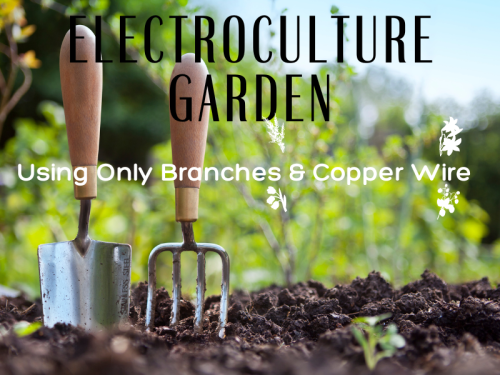by Daniel Yordy, M.Ed.
The primary way children learn is by watching the important people in their lives over time. Some of this learning takes place consciously, but most of it is subconscious. This, I believe, is the single greatest wrong in modern education. Modern education takes the child away from family and parents and makes the most important people his or her peers – a disaster any way you look at it.
But let’s stay with teaching our children at home. My children know my faults; I’m not worried about that. What is most important is that they know that I highly regard them, that I am proud of them.
This is one area where doing projects shines. The project is my daughter’s, but I help steer her to success. She has been cooking casseroles from a cookbook full of mouthwatering pictures. I point her in the right direction, I eat her meal with relish, and I praise her for a great-tasting supper - and they are good.
I know that something really important for her life is being built, completely separate from ‘knowledge’ of facts.
Next, we understand that children love to learn. Again, my years of teaching inside modern education showed me that the primary thing learned by most children after passing for years through that system is to hate learning. There are definite reasons for that.
But how does that impact teaching our own children at home?
Simple. It is important that we do not feel bound to duplicate the ways and approaches to learning pushed inside modern education. Having taught for some years in both Christian and public schools, I fail to see much difference between the two regarding the actual process of education.
Children do not really learn well from textbooks or workbooks. They learn by doing what is interesting and important. Learning never happens by ‘osmosis,’ that is, ‘go through this workbook and you will have gained some learning.’ Learning is an active process by which a child draws valuable information into the important project at hand. That information can come from anywhere.
I would rather my children learn a handful of things really well, then to learn a whole lot of stuff not at all. That sounds obvious, yet it is a truth so often missed. I watch my fellow writing teachers at college following the textbook, wondering why their students’ writing doesn’t improve much. Learning doesn’t happen that way.
What textbooks and workbooks are so capable of doing, though, is stifling the joy of learning in a child. Learning becomes dull and purposeless; therefore the active learning nature that is normal in a child retreats into discouragement. That doesn’t mean all textbooks are completely useless. I am using a public school geography text this year for my daughter and it is working out great. But I doubt that I would use more than one such text at a time.
Project-led learning shines when it comes to how children learn. When there is a project at hand, something interesting and useful to present need, then all the active processes of learning in a child’s mind and heart are fully engaged. They will remember clearly and distinctly.
Less is more.
Real learning is a casual process. Discipline and perseverance has its place, I’m sure, but do not always increase understanding in a child’s heart. I like going to school, having spent seven years in college classrooms. But very little of what I learned there do I actually use to do the things that earn me a living. I use what works for me, and that I have drawn from many different sources over the years.
Real learning is to draw from many different sources in order to successfully accomplish an important task at hand. If that is true, then project-led learning is real learning. The project leads the learning, the opposite of ‘driven’ learning that too often results in a deep dislike of learning.
Children learn by being involved directly in the important needs of family life. They learn by accomplishing important and interesting projects that require drawing information from many sources.
Children love to learn; they will always be learning. Let’s not block that love by attempting to copy the heavy handedness of so much of modern education.
Give your child the gift of projects. They will thank you for it.
Daniel Yordy has worked with teenagers for over thirty years, both on the job, doing a wide range of activities with young men and women from construction to woodworking to gardening to milking cows, and in school, public, private, and home school. While obtaining his Masters Degree, he pondered the difference between the dictates of “modern education” and the practical reality he already knew produced far superior learning results than anything contrived in the modern (pretend) classroom. The result is Project-Led Learning, a weaving of the objectives of education into the actions of real-life, personal projects that contribute to a young person’s life and family.
Out of the philosophy of Project-Led Learning, Mr. Yordy has devised a series of Project Guides in ten different categories of learning. You can find out more about these exciting Guides at http://www.yguideacademy.com/ProjectLedLearning.html
The primary way children learn is by watching the important people in their lives over time. Some of this learning takes place consciously, but most of it is subconscious. This, I believe, is the single greatest wrong in modern education. Modern education takes the child away from family and parents and makes the most important people his or her peers – a disaster any way you look at it.
But let’s stay with teaching our children at home. My children know my faults; I’m not worried about that. What is most important is that they know that I highly regard them, that I am proud of them.
This is one area where doing projects shines. The project is my daughter’s, but I help steer her to success. She has been cooking casseroles from a cookbook full of mouthwatering pictures. I point her in the right direction, I eat her meal with relish, and I praise her for a great-tasting supper - and they are good.
I know that something really important for her life is being built, completely separate from ‘knowledge’ of facts.
Next, we understand that children love to learn. Again, my years of teaching inside modern education showed me that the primary thing learned by most children after passing for years through that system is to hate learning. There are definite reasons for that.
But how does that impact teaching our own children at home?
Simple. It is important that we do not feel bound to duplicate the ways and approaches to learning pushed inside modern education. Having taught for some years in both Christian and public schools, I fail to see much difference between the two regarding the actual process of education.
Children do not really learn well from textbooks or workbooks. They learn by doing what is interesting and important. Learning never happens by ‘osmosis,’ that is, ‘go through this workbook and you will have gained some learning.’ Learning is an active process by which a child draws valuable information into the important project at hand. That information can come from anywhere.
I would rather my children learn a handful of things really well, then to learn a whole lot of stuff not at all. That sounds obvious, yet it is a truth so often missed. I watch my fellow writing teachers at college following the textbook, wondering why their students’ writing doesn’t improve much. Learning doesn’t happen that way.
What textbooks and workbooks are so capable of doing, though, is stifling the joy of learning in a child. Learning becomes dull and purposeless; therefore the active learning nature that is normal in a child retreats into discouragement. That doesn’t mean all textbooks are completely useless. I am using a public school geography text this year for my daughter and it is working out great. But I doubt that I would use more than one such text at a time.
Project-led learning shines when it comes to how children learn. When there is a project at hand, something interesting and useful to present need, then all the active processes of learning in a child’s mind and heart are fully engaged. They will remember clearly and distinctly.
Less is more.
Real learning is a casual process. Discipline and perseverance has its place, I’m sure, but do not always increase understanding in a child’s heart. I like going to school, having spent seven years in college classrooms. But very little of what I learned there do I actually use to do the things that earn me a living. I use what works for me, and that I have drawn from many different sources over the years.
Real learning is to draw from many different sources in order to successfully accomplish an important task at hand. If that is true, then project-led learning is real learning. The project leads the learning, the opposite of ‘driven’ learning that too often results in a deep dislike of learning.
Children learn by being involved directly in the important needs of family life. They learn by accomplishing important and interesting projects that require drawing information from many sources.
Children love to learn; they will always be learning. Let’s not block that love by attempting to copy the heavy handedness of so much of modern education.
Give your child the gift of projects. They will thank you for it.
Daniel Yordy has worked with teenagers for over thirty years, both on the job, doing a wide range of activities with young men and women from construction to woodworking to gardening to milking cows, and in school, public, private, and home school. While obtaining his Masters Degree, he pondered the difference between the dictates of “modern education” and the practical reality he already knew produced far superior learning results than anything contrived in the modern (pretend) classroom. The result is Project-Led Learning, a weaving of the objectives of education into the actions of real-life, personal projects that contribute to a young person’s life and family.
Out of the philosophy of Project-Led Learning, Mr. Yordy has devised a series of Project Guides in ten different categories of learning. You can find out more about these exciting Guides at http://www.yguideacademy.com/ProjectLedLearning.html





